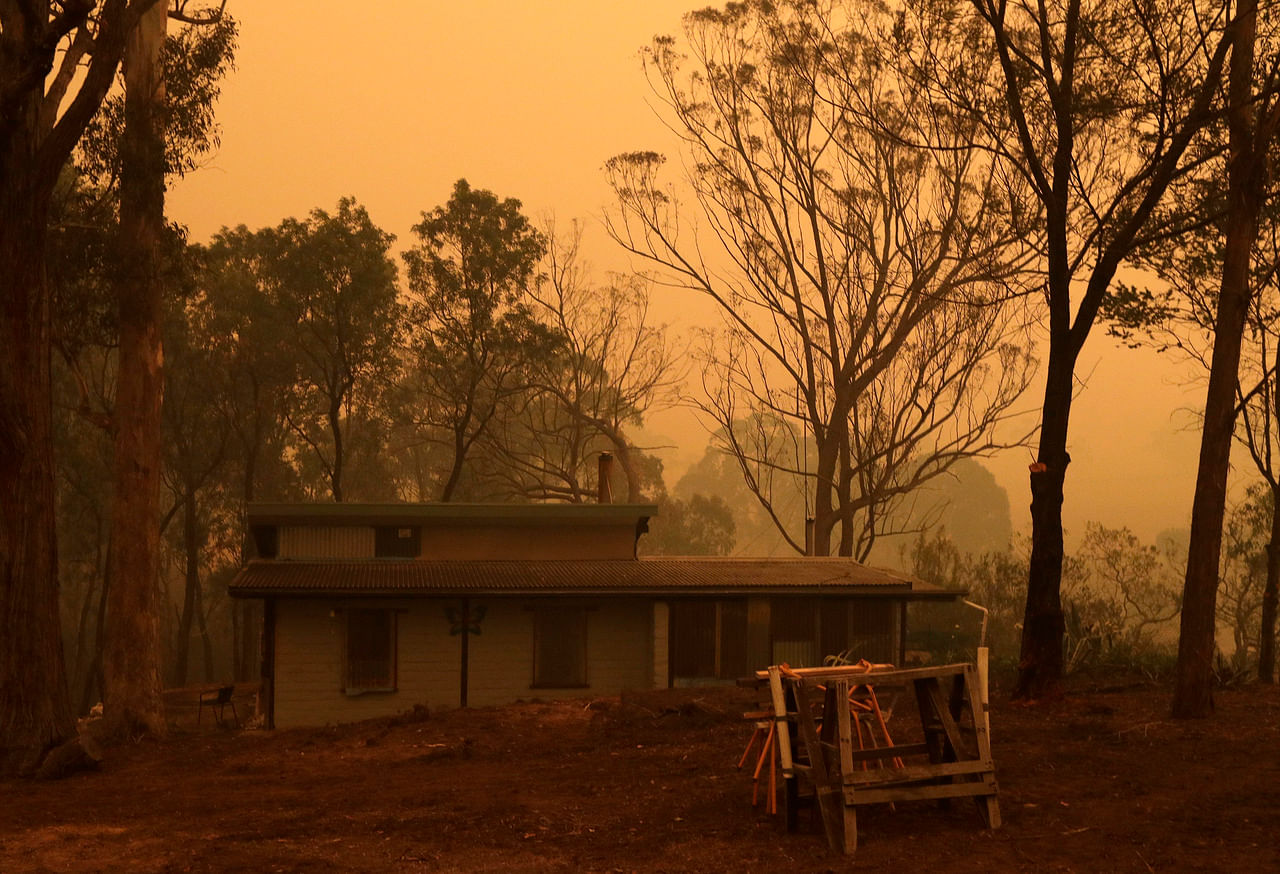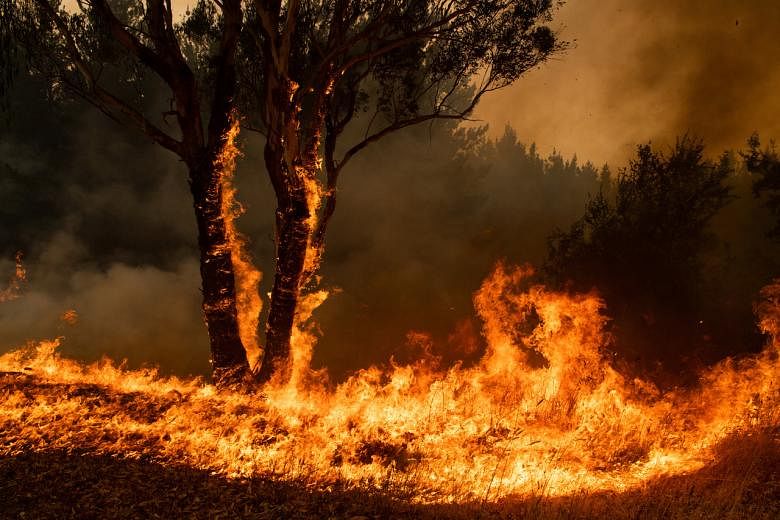BURRAGATE (AP, REUTERS) - Cooler temperatures and rainfall had eased conditions after Friday's (Jan 10) strong southerly wind change that packed gusts of more than 100 kph, whipping some fires on the east coast up to the emergency warning level.
The much needed respite was an opportunity to consolidate and try and get the upper hand over the fires, said Shane Fitzsimmons, commissioner of the New South Wales (NSW) Rural Fire Service.
"It would appear that we have got at least a week," Fitzsimmons told a media briefing. "It will probably be the best seven days we have had without a rise of very dangerous fire ratings."
South Australian fire officials said the situation on Kangaroo Island has stabilised after more than 200,000 hectares (494,000 acres) had burnt in blazes described as "hell on earth", by the island's mayor, Michael Pengill, on Twitter.
Two wildfires merged to form a massive inferno in southeast Australia on Saturday, and a man suffered serious burns protecting a home during a night of treacherous conditions during the nation's unprecedented fire crisis.
Authorities were assessing the damage after firefighters battled flames fanned by strong winds through the night and lightning strikes sparked new blazes in New South Wales and Victoria, Australia's most populous states. Conditions were milder Saturday and forecast to remain relatively benign for the next week.
"In the scheme of things, we did OK last night," Victorian Emergency Management Commissioner Andrew Crisp said.
Fitzsimmons told reporters that officials were "extremely relieved" the fires were not been more destructive overnight.
A man suffered burns protecting a home and was airlifted to a Sydney hospital in serious condition to undergo surgery, Fitzsimmons said.
Several firefighters received minor burns, and one suffered shortness of breath but were not admitted to a hospital, he said.
With no heavy rain expected, the 600,000-hectare (1.4 million-acre) fire in southern New South Wales near the Victorian border is expected to burn for weeks, officials said.
The fire crisis in southeast Australia has killed at least 26 people, destroyed more than 2,000 homes and scorched an area twice the size of the US state of Maryland since September.
It also has brought accusations that Prime Minister Scott Morrison's conservative government needs to take more action to counter climate change, which experts say worsens the blazes. Thousands of protesters rallied late Friday in Sydney and Melbourne, calling for Morrison to be fired and for Australia to take tougher action on global warming.
The protesters carried placards saying, "We deserve more than your negligence," "This is ecosystem collapse" and "We can't breathe," referring to wildfire smoke that has choked both cities.
Australia is the world's biggest exporter of coal and liquid natural gas. Australians are also among the worst greenhouse gas emitters per capita.
On Friday, thousands of people in the path of fires fled to evacuation centers, while some chose to ignore evacuation orders and stayed to defend their homes.
Evan Harris, who lives in the New South Wales rural village of Burragate, said police and fire crews told him he should leave his cottage because of the threat,. He told them he wasn't going anywhere.

Burragate was choked with smoke for several hours Friday and was directly in a fire's path.
A fire strike team and several members of the Australian Army arrived to try to save properties, and they were prepared to hunker down in a fire station if the flames overran them.
In the end, the winds died down and so did the fire. But crews worry the flames will flare up again during a fire season that could continue for months.
Harris said he likes to live off the grid in his remote home, which is made from mud bricks. He has no electricity, instead using batteries to power the lights and a small wood burner to heat water. The cottage itself has a warm and cozy feel. And Harris feels like he has a point to make.
"If this house survives, I think it will be a bit of a wake-up call for people," he said. "That maybe people should start building like this, instead of over-exorbitant houses." Harris prepared for the blazes by tacking sheets of iron over his windows and clearing the area around the house of grass and shrubbery that might have caught fire. He dug a hole away from the cottage to house his gas canisters.
Harris said he was disappointed in the environmental destruction and that people should be paying attention to the more sustainable way that indigenous Australians previously lived.
"This is a result of the human species demanding too much of the environment," he said of the wildfires.

